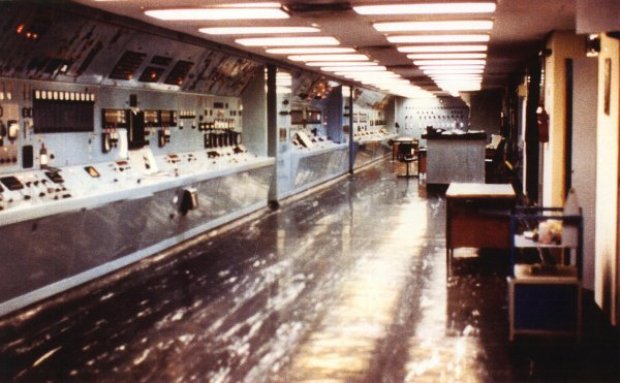The policy of nuclear opacity forbids Israelis from dealing with the very real danger of a nuclear catastrophe following a natural disaster. Will the earthquake in Japan change that?

One of the gravest fears following the earthquake which took place near the Japanese coastline this Friday was a meltdown at the at the Fukushima Dai-ichi nuclear plant, located some 250km north of Tokyo. Recent reports claimed that the situation in the reactor was under control, but according an AP story, radiation near the plant was 1,000 times higher than usual. One could only imagine the devastating effect of a Chernobyl-like catastrophe to the Fukushima Dai-ichi plant.
Israel’s nuclear facility is located near the town of Dimona, just West of the Dead Sea, and practically on the Syrian-African Fault Line, at the heart of the area most prone to earthquakes in the entire region. Statistically, every hundred years or so a major earthquake shakes the Syrian-Africa Fault Line. The most well-known were the 1837 and the 1937 earthquakes, which left hundreds of casualties along the Jordan Valley, the Dead Sea and the Sea of Galilee. There is greater attention to the risk of earthquakes in Israel in recent years, and building standards were tightened accordingly. Yet the policy of nuclear opacity means that the danger of a meltdown in Dimona is hardly discussed.
Censorship of the nuclear issue is very tight in Israel. Accidents in Dimona, including fatal ones which happened in the 60’s and 70’s, were hidden from the public. Since 2002, tablets of Lugol’s solution – which fight the effects of nuclear radiation and can be taken in case of nuclear emergency – are distributed to citizens living less than 30km of the Dimona plant. Yet the Israeli media was never allowed to discuss safety procedures in Dimona, and repercussions in the case of a natural catastrophe are all but unknown.
Environmental NGO’s such as Greenpeace are forbidden from measuring radiation in the region, and the committee in charge of the Dimona plant’s maintenance operates in total secrecy. It’s worth mentioning that the Dimona reactor, built in the late 50’s and early 60’s with the help of French scientists, is one of the oldest in the West.
A few months ago, I interviewed Avner Cohen, the unofficial historian of the Israeli nuclear program. Due to censorship and other legal restraints on his work, Cohen left Israel in the 90’s and now lives in Washington DC, yet he was close to several of the founding fathers of the Israeli nuclear program and has intimate knowledge the Dimona project, and especially of its early stages.
I asked Cohen about the possibility of a natural catastrophe that could lead to a nuclear disaster in Dimona – one that would affect the entire region, and especially southern Jordan, the West Bank and nearby Israeli cities. Cohen believes that the scientists in charge of the project are well aware of these dangers, and that the facility is as safe as it could be, under the circumstances. Yet without any public information, he admitted we could never know that for sure.
It is Cohen’s belief that Israel should end its policy of nuclear opacity, and seek an arrangement with the international community that would allow it to conduct its nuclear activities in the open. Cohen claims that opacity has a dangerous effect on Israeli democracy, on our understanding of the region’s history, and on current political and diplomatic dynamics. I think that we should add to that the environmental risk of nuclear opacity – one that was revealed again this weekend in Japan.

